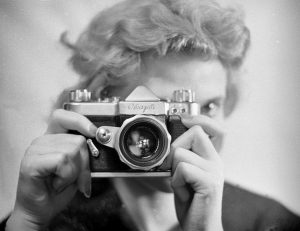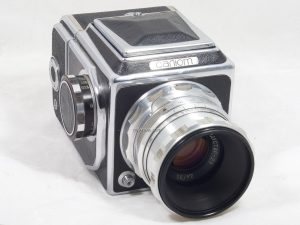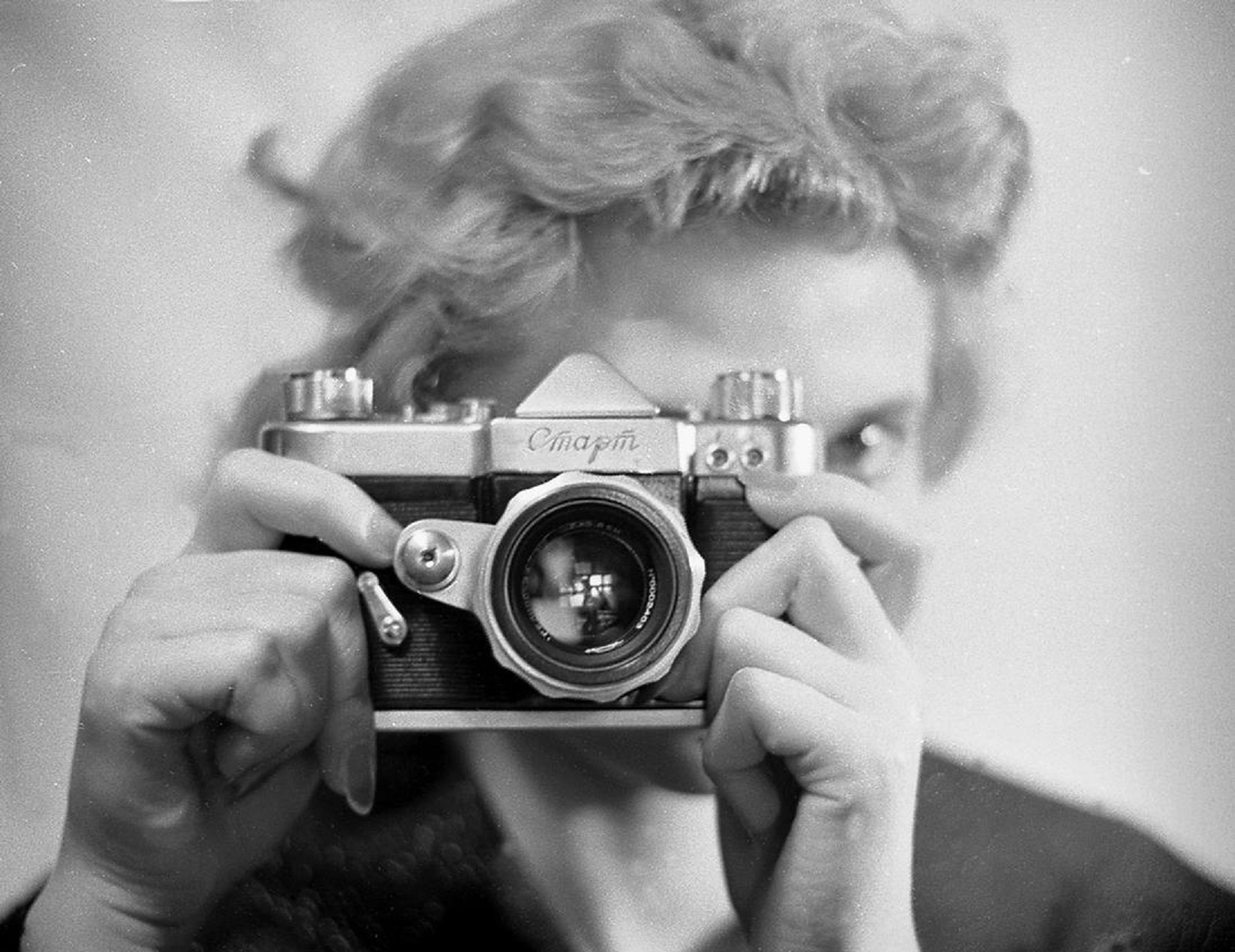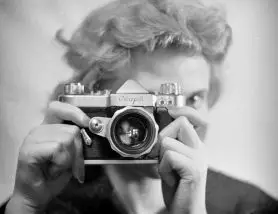 Last week’s Keppler’s Vault featured two different Russian Lens articles, so this week I thought I’d include a couple articles I’ve found that talk about 1950s and 60s Soviet cameras. On a side note, it’s interesting to me that every one of these articles refers to them as “Russian”, rather than “Soviet”, or “Ukrainian”, etc.
Last week’s Keppler’s Vault featured two different Russian Lens articles, so this week I thought I’d include a couple articles I’ve found that talk about 1950s and 60s Soviet cameras. On a side note, it’s interesting to me that every one of these articles refers to them as “Russian”, rather than “Soviet”, or “Ukrainian”, etc.
The first, and longest of the articles entitled “Russian Cameras Today” is from the October 1958 issue of Popular Photography and briefly mentions several Soviet cameras that I’ve reviewed including the GOMZ Leningrad, the Kiev 4, and the KMZ Start. Also included are less common cameras like the panoramic T-2, the Cometa, and something called the Yunost. Strangely, there is no mention of any Leica Thread Mount cameras like the Zorki or FED rangefinders. Perhaps these were already pretty well known in the West by the time this article debuted.

This article acts more like a buyer’s guide than an actual review as there’s mostly just specs, and very little commentary on the models themselves. What little there is, is generally positive and focuses more on the uniqueness of the model, than any critique of the camera. I’ve noticed a generally more impartial tone to Soviet articles appearing in Popular Photography, compared to those from Modern Photography which often take on a sarcastic, sometimes dismissive tone.

In one paragraph the article poses an interesting question that I would be fascinated to learn more about, which is what did Soviet photographers think of us? Were they aware of the seemingly endless number of Japanese, German, and American cameras that were available in the years after the war? What would they have thought about our ability to stop into a corner drug store and pick up a fresh roll of film, shoot it, and get it developed in the same day? If I ever come across a Russian magazine with an article like that, I’ll be sure to share it (after translating it first!)
Of the other three articles included, the first is a more in depth write up of the Cometa (more accurately Kometa, or Комета in Russian) from the same issue as the first article, expanding on whether the Soviets were the first to release a fully automatic camera. The answer turned out to be “no” as the Kometa never made it past the prototype stage. Only a couple are known to exist and are all in private collections. Besides, in the years of 1958 and 59, a literal onslaught of automatic “electric eye” cameras were released by everyone from Kodak, to Bell & Howell, to Fujica, to AGFA.

The next features a Soviet copy of the Hasselblad medium format SLR from Modern Photography’s June 1968 issue. Showing the huge disconnect between western press and Cold War era Soviet information, the article hilariously gets the name of the camera wrong, calling it a Smena, when in reality the camera they show is the Kiev Arsenal Salyut (Салют). Although there were Soviet cameras with the name Smena, none were Hassy clones.
Finally, the last is from September 1957, and shows that the Soviets didn’t discriminate when they chose who to copy, as this covers their version of the Polaroid Land Camera called the Moment (Момент). Built by GOMZ, the Moment isn’t really a direct copy, but more of a heavily inspired model of the original Model 95 Land Camera. The author says he preferred the design of the back of the Moment over the Polaroid’s, but that the images produced on the Soviet instant film were inferior to that of the real thing.
As you might expect, getting any kind of information out of the Soviet Union was likely difficult back then. An equal amount of secrecy and disinformation made accurate news quite difficult, and even reputable publications would get things like the actual names of the cameras incorrect. Still, I think these articles were likely very fascinating to photographers and photography enthusiasts in the late 1950s, giving a glimpse into what was happening behind the “Iron Curtain”.
Scroll through the article below for 12 pages worth of Russian camera reviews from the mid 20th century.
All scans used with permission by Marc Bergman, 2018.


